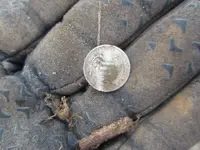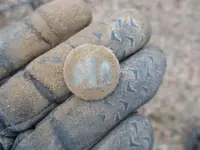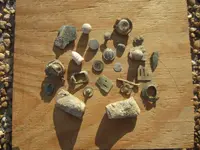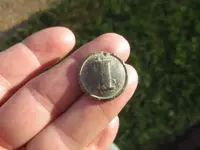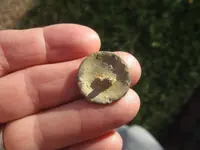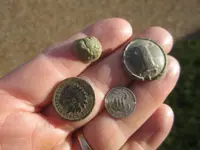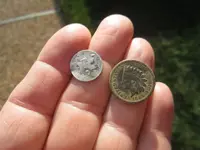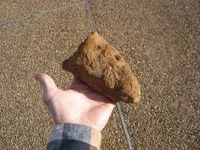Bill D. (VA)
Silver Member
- Joined
- Oct 7, 2008
- Messages
- 4,711
- Reaction score
- 6,212
- Golden Thread
- 6
- Location
- SE Virginia
- 🥇 Banner finds
- 6
- 🏆 Honorable Mentions:
- 2
- Detector(s) used
- F75 SE (land); CZ-21 (saltwater)
- Primary Interest:
- Other
On the spur of the moment my buddy Dan got the opportunity to take off the afternoon on Tues, and we decided to hustle over to our usual hunting grounds in an attempt to get ourselves onto a new site. We eventually met up with a property owner we’ve dealt with before, and secured permission to hunt one of his more remote fields that had the potential to produce a few oldies. By the time we finished talking with him and made it to the site, it was already 2:30 so we only had a couple hours of daylight left. Turns out the field we wanted to hunt still had unharvested soybeans except for a 50 ft strip that had been cut around the perimeter. While walking that area we ran into a couple of small iron patches and started pulling out a few things here and there. Dan stuck first with a huge frag from a Georgian shoe buckle which was a great sign. We both then dug a couple buttons, and a short time later I was quite surprised when I popped out one of those tiny silver 3 cent pieces. Hadn't dug one of those for quite some time. Next for me was an IH cent, and it wasn’t until I got home and cleaned it that I realized it was a nice 1862 fatty. In the meantime Dan was steadily digging targets, but I'll let him post his finds (which include a coin). Just before we finished hunting the strip I got a fairly low-toned hit, and a dull silvery target appeared. At first I thought it might be some kind of a tombac button or a small leather ornament or rosette, but I brought it over for Dan to check out before cleaning the dirt off. Well, it didn’t take but a second for Dan’s jaw to drop, and then he proceeded to tell me I had dug a rarely seen pewter, or “white metal” as they’re sometimes called, CS Block I coat-size button (23mm). And I believe it’s a cast local variant with the mold seam clearly visible, but not sure of the exact ID. That obviously turned out to be the find of the day and got us pumped that this could actually be a small camp instead of a random drop at a house site. After returning home we both did a little additional research and discovered there was indeed were some other structures in the bean field. But based on our finds, this looks to be mostly a late 1700s to mid-1800s site – not quite as old as we were hoping, but it may still turn out to be a very interesting site. Within the next week or so we’re looking forward to venturing back to check out the hopefully cut field.
Amazon Forum Fav 👍
Attachments
Upvote
34



